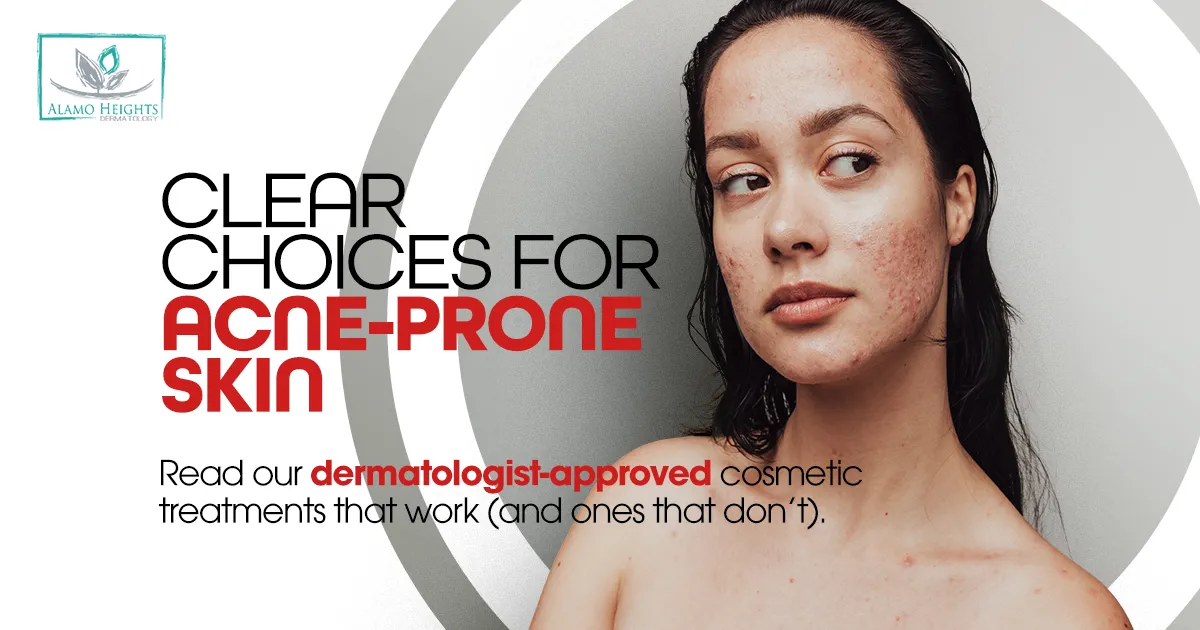When it comes to managing acne-prone skin, it can feel like you’ve tried it all—drugstore products, viral social media hacks, and every “miracle” cream under the sun. But not every skincare treatment lives up to the hype, and some can even make things worse. If you’re searching for real results, it’s time to clear the confusion. Read more about the cosmetic treatments that can help acne-prone skin and the ones we recommend avoiding.
What Works: Dermatologist-Approved Cosmetic Treatments
1. Chemical Peels (with Salicylic or Glycolic Acid)
These gentle exfoliating treatments can help unclog pores, reduce oil production, and improve skin texture. Salicylic acid in particular penetrates deep into the pores to clear out acne-causing debris. A series of peels can also help fade post-acne marks over time.
2. Laser and Light Therapy (e.g., Blue Light, IPL)
These in-office treatments target acne-causing bacteria and inflammation. Blue light therapy is especially effective for reducing active breakouts, while IPL (intense pulsed light) can help with redness and post-acne discoloration.
3. Microneedling (with Caution)
Microneedling can improve the appearance of acne scars and stimulate collagen. However, it should only be done when active acne is under control to avoid irritation and spread of bacteria.
4. HydraFacial (Acne Protocol)
This medical-grade facial uses gentle suction and exfoliation to clear out pores, followed by hydrating and soothing serums. It’s ideal for oily or congested skin and can help maintain clear skin with regular sessions.
What to Avoid: Treatments That Can Worsen Acne
1. Heavy Oils in “Natural” Facials
While oils like coconut or olive oil are touted as natural remedies, they can clog pores and trigger breakouts in acne-prone skin. Always check product ingredients for non-comedogenic labels.
2. Harsh Physical Exfoliants (Scrubs with Large Granules)
Rough scrubs can damage the skin barrier, increase inflammation, and even spread acne bacteria. Skip the walnut shells and opt for chemical exfoliants instead.
3. Comedogenic Makeup or Skin Products
Some cosmetic procedures, like heavy full-coverage makeup applications or thick moisturizers used in certain facials, can clog pores. If you’re getting a facial, let your provider know you have acne-prone skin so they can tailor the treatment accordingly.
Tips to Maximize Results

Ready for Clearer Skin?
Book a consultation with our dermatology team to explore personalized treatment options for acne-prone skin. Whether you’re dealing with breakouts, scarring, or both, we’ll help you make confident, clear choices for your skin. Visit our website to schedule an appointment with us today!

